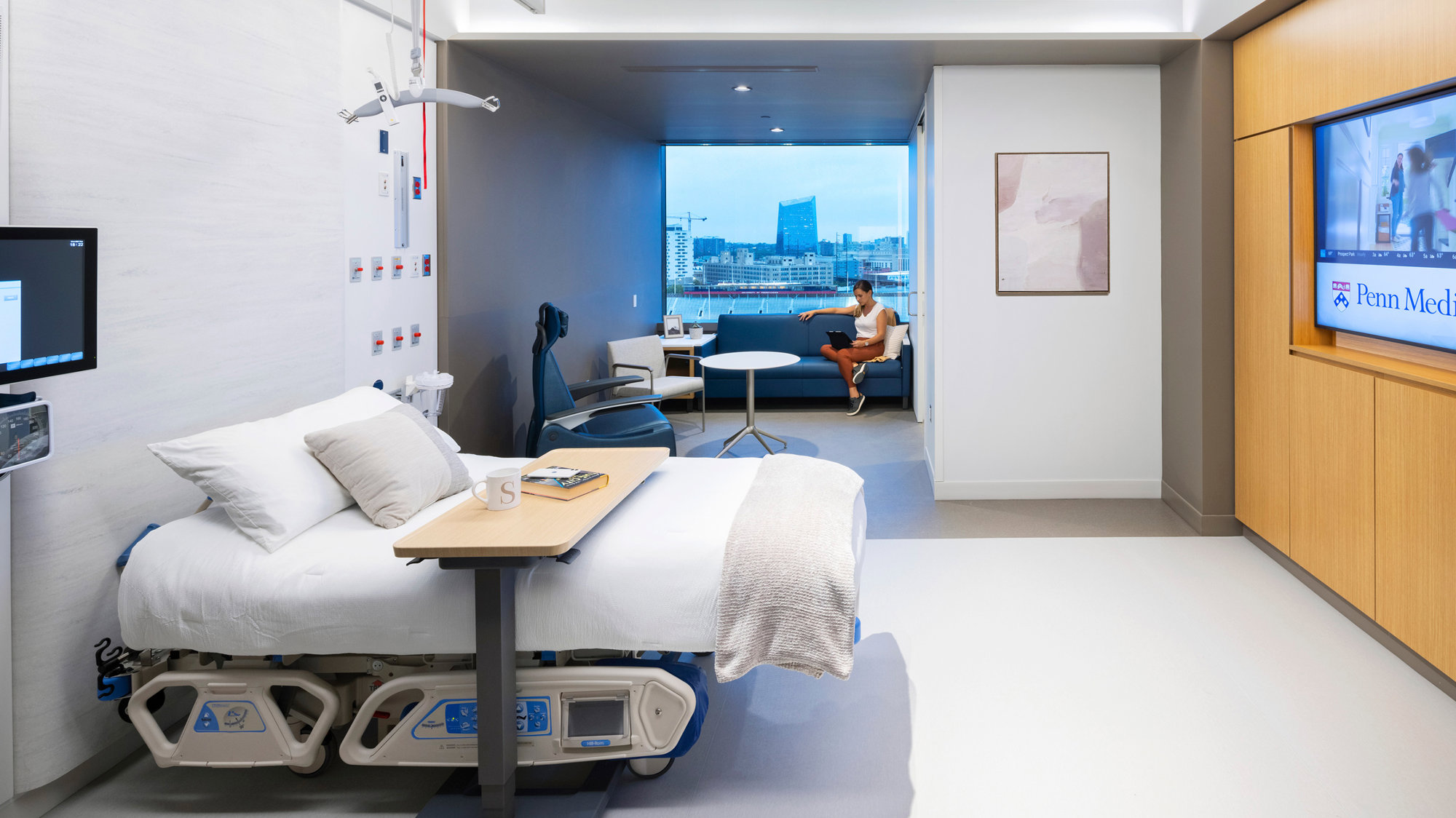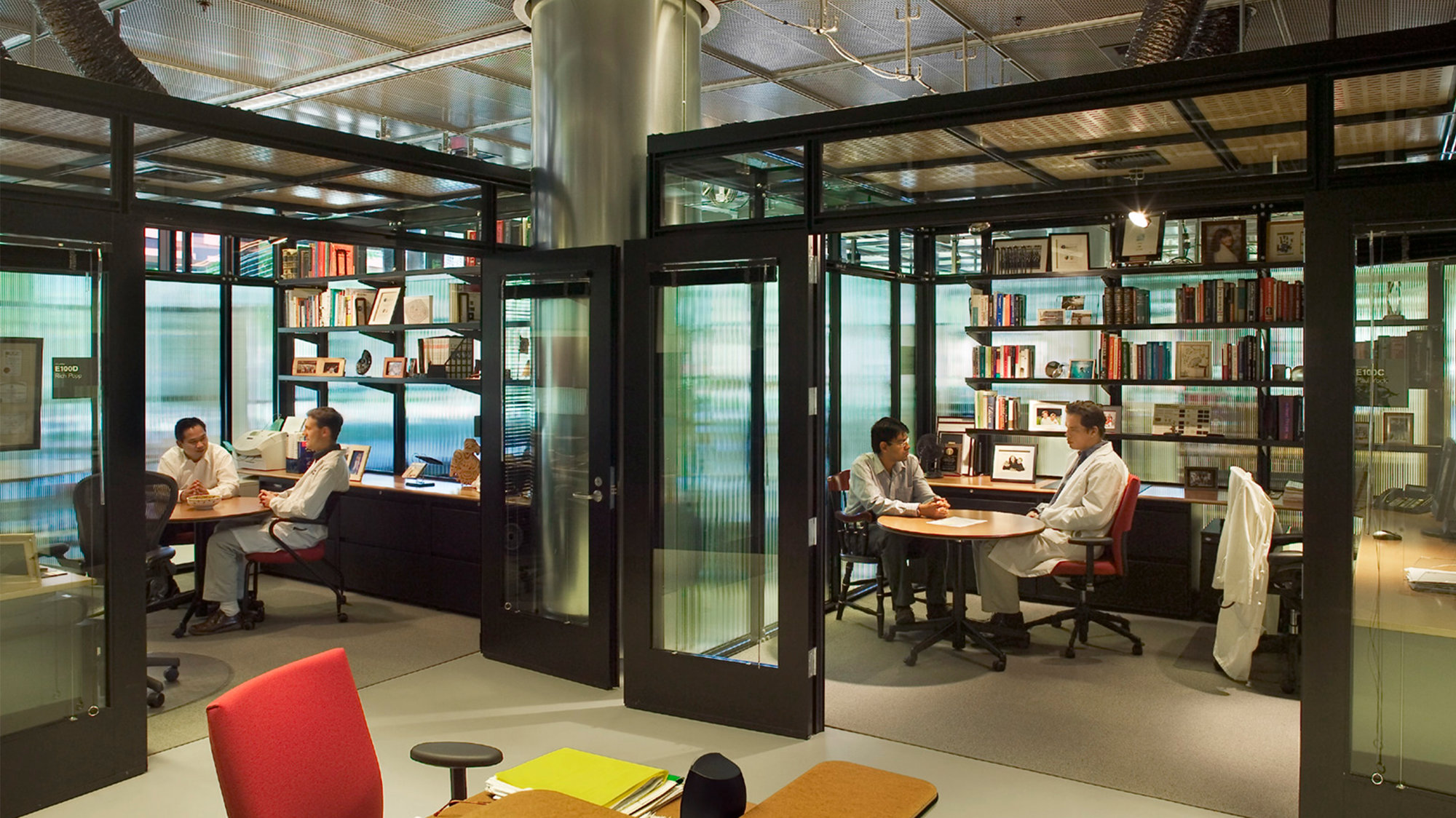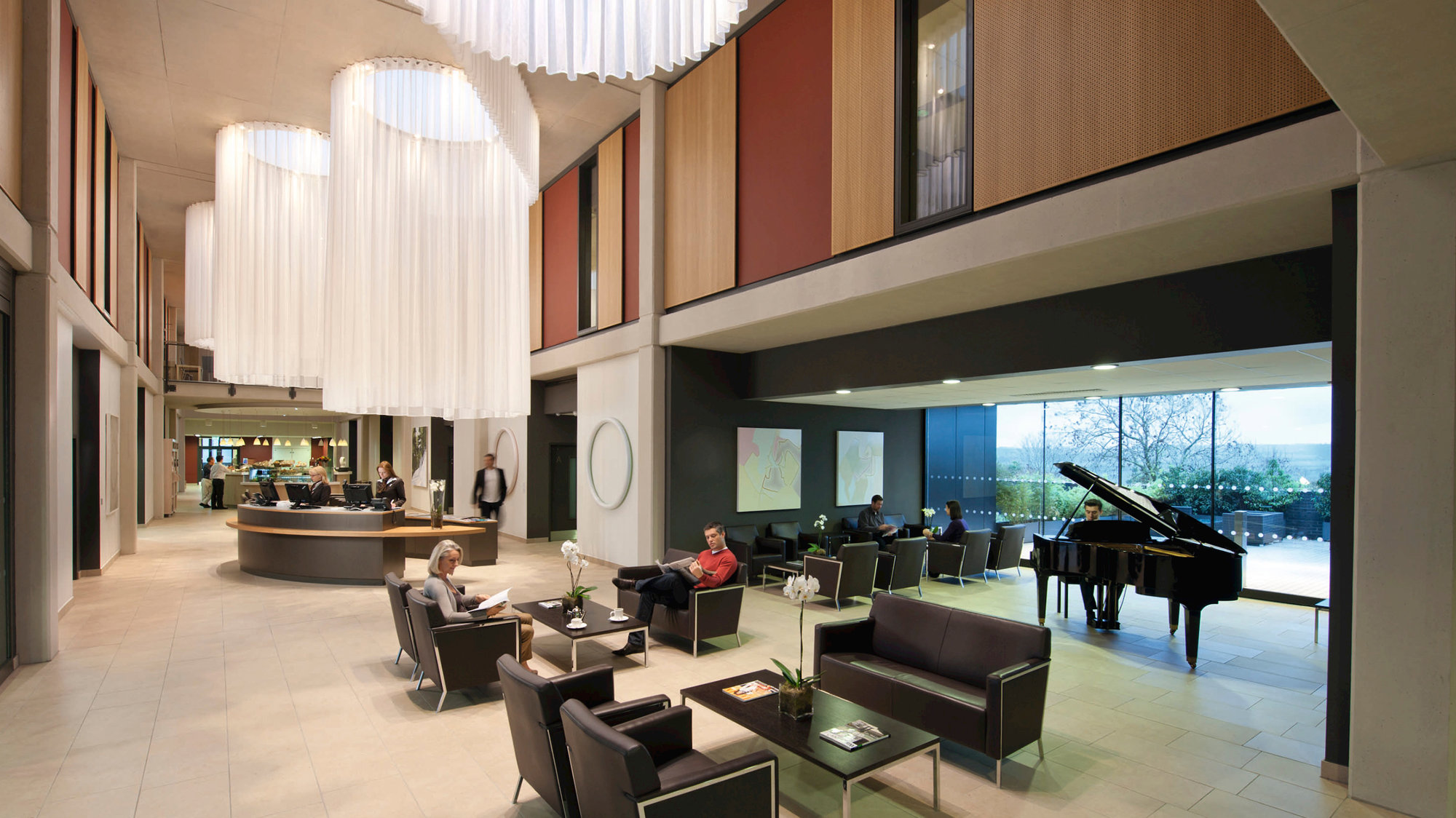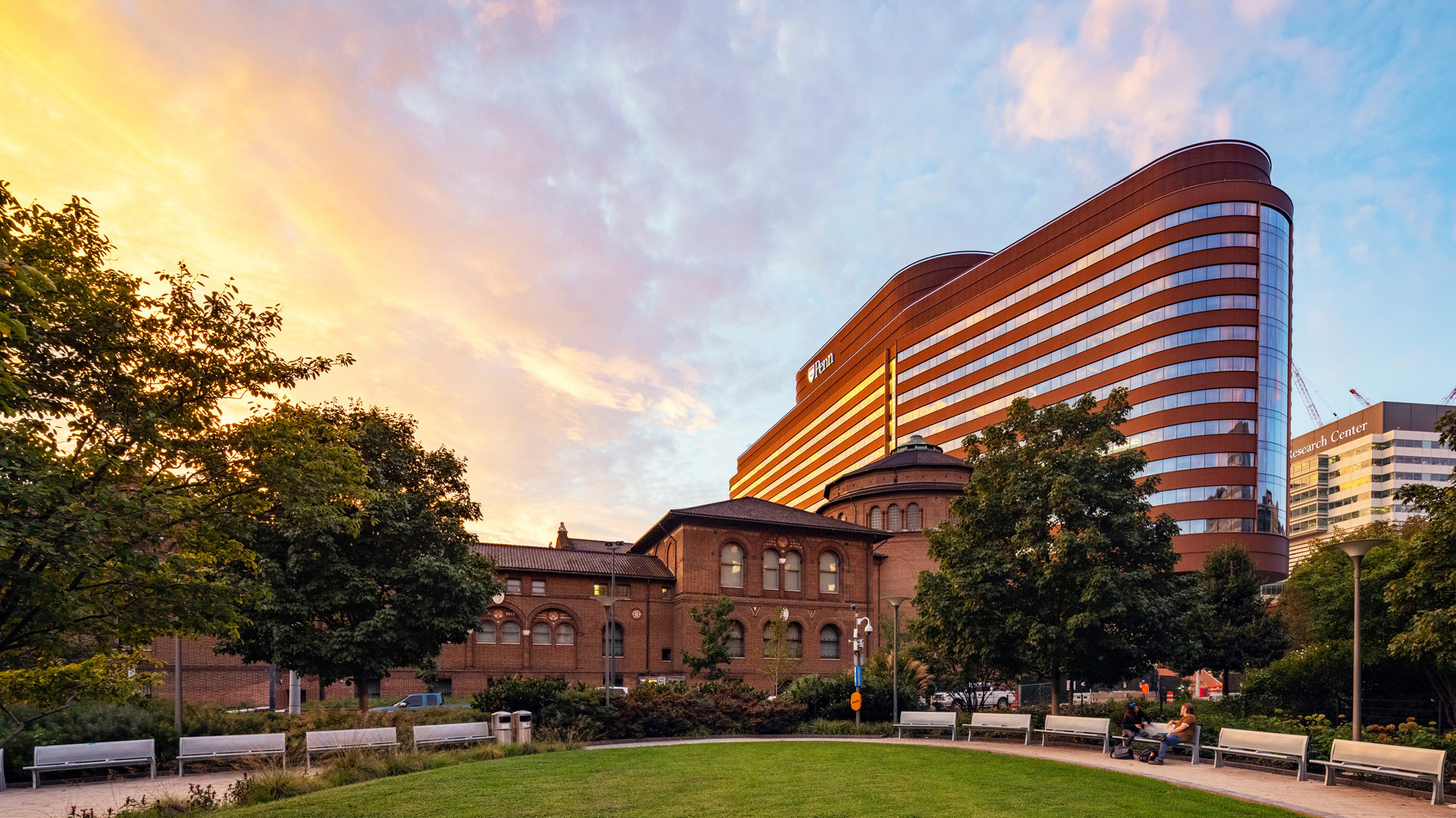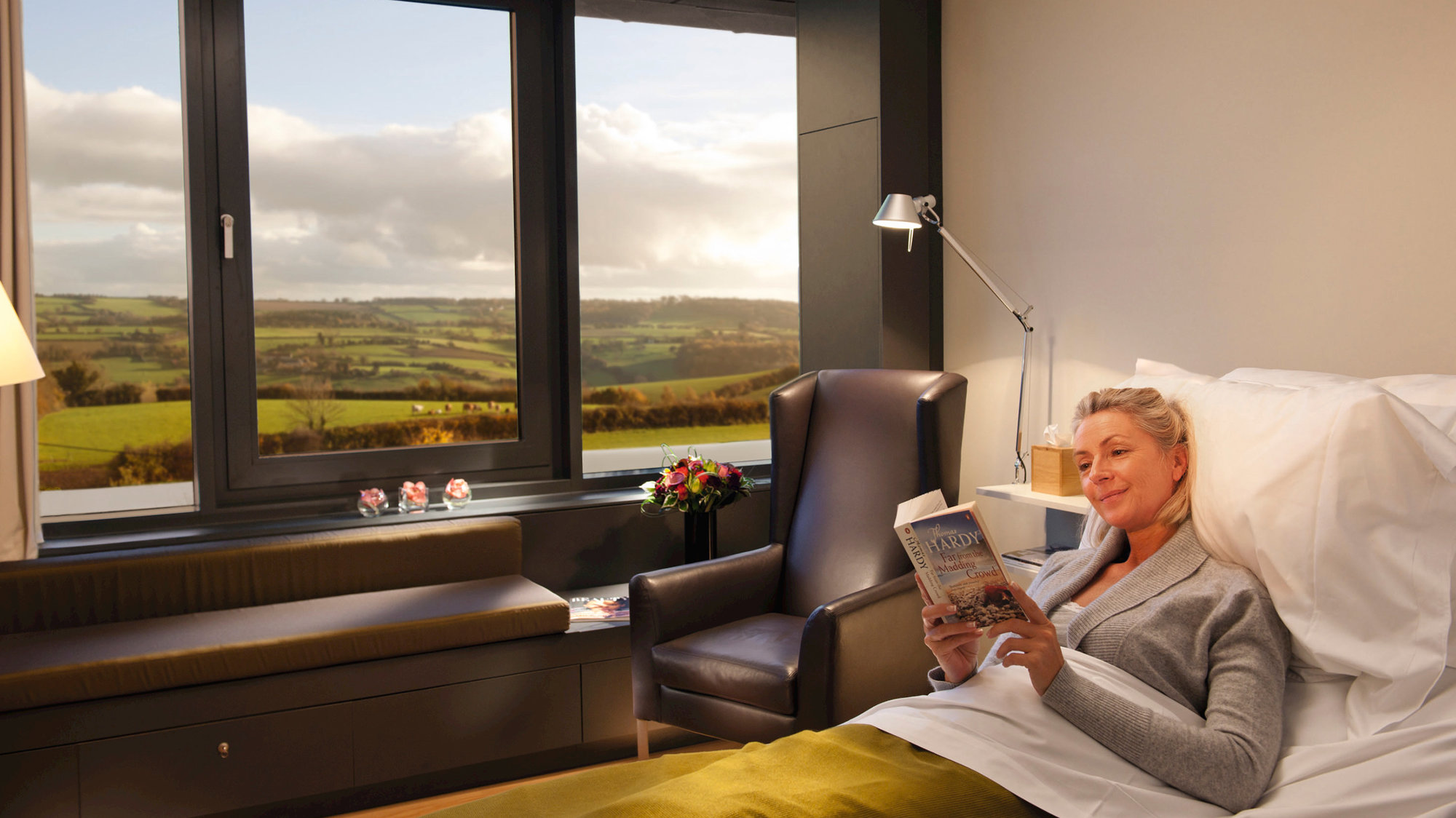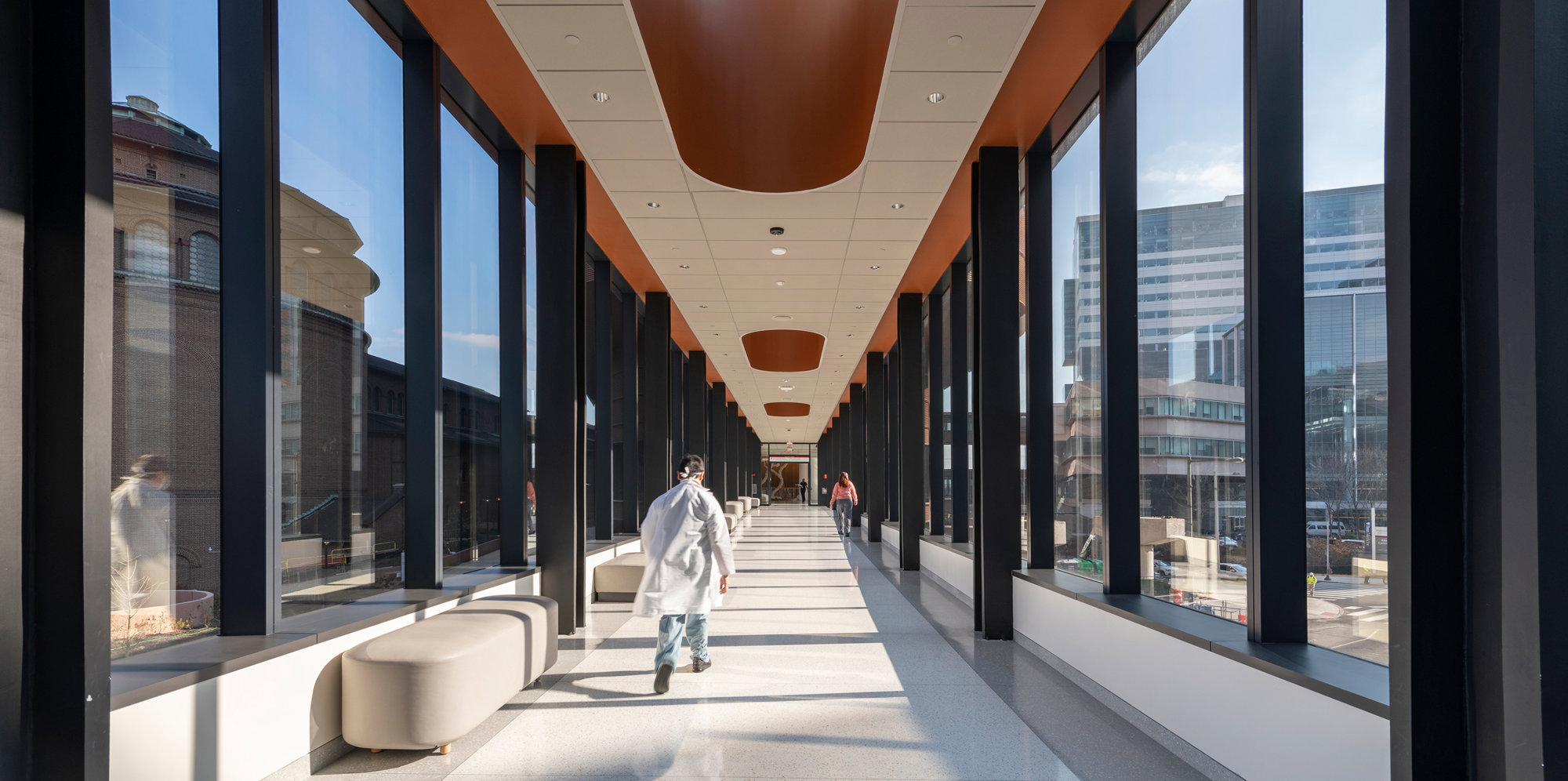Nigel Dancey has been with Foster + Partners since 1990 and has worked on a range of projects across North America, Europe and the Middle East. Nigel has expertise in designing healthcare and research projects, including the Patient Pavilion for Penn Medicine, Philadelphia and the Clark Center at Stanford University. He is also part of the team who are designing the Memorial Sloan Kettering (MSK) Cancer Care Pavilion in New York. Here he discusses the practice’s approach to designing healthcare buildings which facilitate innovation in medical science and put the patient first.
Could you outline Foster + Partners approach to designing healthcare projects?
We have a saying ‘better by design,’ which summarises our belief that good design has the power to make a real, tangible difference to people’s lives. When it comes to designing healthcare projects, the patient always comes first. This means thinking about the patient experience in its entirety, from the first moment of arrival.
All of our healthcare projects, ongoing and completed, draw on over 30 years of hospitality experience. We think about every step of the patient’s journey through the building, to make their time in hospital as comfortable as possible. It is crucial that the arrival sequence is welcoming and intuitive - much like a hospitality setting. This extends to patients’ family members and friends, who must also navigate the space when visiting their loved ones.
Of course, we also consider the healthcare professionals who spend most of their lives in hospital buildings. Our aim is always to create an efficient and healthy environment, so they can be productive and happy while carrying out their extraordinary work.
You used the phrase ‘better by design.’ How can good architectural design improve the patient experience?
Our patient rooms are designed to optimise comfort and improve recovery times. We understand that daylight and visual connections to the outside world can make a real difference. Every patient room in Penn Medicine Pavilion has a view and receives natural light. We also positioned family ‘living rooms’ at the end of the building’s wings to optimise views out. It is important that patients, staff and visitors feel connected to the outside world, to maintain a sense of wellbeing. We are currently having conversations with MSK about how we can maximise views and increase natural light in the Cancer Care Pavilion we are designing for them.
Patients should be able to access information and contact their families, as and when they choose to do so. They should also be able to control the light levels and temperature in their rooms, to meet changing needs. Penn’s private patient rooms feature interactive walls that allow the patient to customise their own environment, while also working as a real-time information and teaching aid for doctors.
This question also comes back to functionality and legibility. Going to hospital when you are unwell can be an extremely stressful experience. Good wayfinding is essential for creating an environment which is calm and reassuring. For example, at Penn, the flexible planning system for the units breaks the building down into ‘neighbourhoods’ which creates a more personalised and human scale hospital environment. This is something we consider during the earliest stages of the design process.
The choice of building materials can also contribute to a sense of calm. One of our earliest healthcare projects Circle Bath, now Sulis Hospital Bath, incorporates a palette of warm natural materials including wood acoustic panels and floors. The design also makes the most of the picturesque countryside setting, with landscaping that emphasises the therapeutic natural environment.
What will the hospital of the future look like?
When designing a new healthcare building, we often talk about advanced distribution systems and the state-of-the-art technologies which are coming next. Although technology has the potential to enhance patient care, I still believe that the human elements of design make the biggest difference. Ultimately, it comes down to creating a more thoughtful and humane environment for both patients and staff.
This is a truly incredible time for innovation in medical science. At Penn Medicine, we’ve seen researchers pioneering the mRNA technology used in COVID-19 vaccines and taking major steps forward to treat children with leukaemia. MSK is also doing brilliant work to revolutionise the understanding of cancer as a disease and improve the ability to prevent, diagnose and treat it.
As architects, we aim to create places which enhance collaboration in medical research and facilitate breakthroughs such as these. We are designing environments where leading scientists, surgeons and doctors can work together to find cures and treatments.
The practice is building on design ideas that we established at the Clark Center at Stanford University. In contrast to the traditional laboratory facility with its closed rooms and corridors, the Clark Center is open and flexible - external balconies replace internal corridors and laboratory layouts can be reconfigured at will.
The opportunity to create flexible and collaborative spaces that enhance medical research is a challenge worth undertaking. As a practice we are passionate about designing buildings which will be at the forefront of innovation and patient care.









